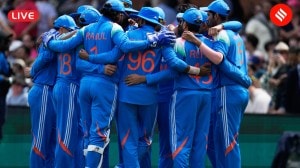Creation of new States could lead to demand for many more
NEW DELHI, AUGUST 2: The stage is now set for the creation of Chhatisgarh, Uttaranchal and Jharkhand, with the Lok Sabha passing the Bihar...

NEW DELHI, AUGUST 2: The stage is now set for the creation of Chhatisgarh, Uttaranchal and Jharkhand, with the Lok Sabha passing the Bihar Reorganisation Bill, 2000, and having passed similar bills for the reorganisation of UP and Madhya Pradesh in the last two days.
The nation has now come a long way from the day when Govind Ballabh Pant, then chief minister of Uttar Pradesh, had thundered, “Hum Ganga Yamuna ki bhoomi ko batne nahin denge”. He was responding to a dissenting note by K M Panikker, one of the three members of the States’ Reorganisation Commission, who had made a case for the division of Uttar Pradesh, arguing that it would be administratively unmanageable and create a political imbalance in the country.
It is a paradox that the regional parties — the Samajwadi Party, RJD, Akali Dal, BJD, AIDMK — have opposed the creation of the new states, though they espouse the cause of greater federalism. In fact, it is the mainline parties which talk about a strong Centre, which have supported the three new States in the Indian Union. Given the stance of the BJP and the Congress, the passage of the three bills in the Rajya Sabha is now a mere formality.
It is also clear that the timetable for the new states will be determined by the timing of the UP elections and when the BJP decides to plump for them. They are due in October, 2001. The creation of Uttaranchal, which will hive off 23 constituencies from the existing State, even though it will ultimately have 70 seats, would place the BJP Government in Lucknow in a precarious position. Chief Minister Ram Prakash Gupta would have to dissolve the State Assembly himself before the formation of Uttaranchal, if he wants elections to be held under his leadership. Or the State would be put under President’s Rule, if his Government falls, which is on the cards with the creation of the new Hill-State.
With the Bills passed in the monsoon session of Parliament and given Presidential assent thereafter, the Government cannot push the announcement of the dates by which the three States would come into existence beyond the winter session of Parliament. Any further delay would deprive the ruling party of any political advantage that would otherwise accrue to it. This means that Uttaranchal, Chhatisgarh and Jharkhand, would be in place early in 2001. And in all likelihood elections to the UP assembly would be clubbed with the assembly polls due in West Bengal, Tamil Nadu, Kerala, early next year.
The BJP is fulfilling its manifesto promise which could not be put off beyond a point. The party has, after all, upped its tally to 11 (out of 14) Lok Sabha seats from South Bihar on the basis of its Jharkhand slogan. As the arithmetic stands, it would be a BJP-cum-allies government in the new Jharkhand State with its 81 members, but in all probability the Chief Minister would belong to the Jharkhand Mukti Morcha. Sources say that L K Advani had promised this to Shibu Soren when forging an alliance with the JMM during the last elections in Bihar.
Laloo Yadav’s RJD, with its electoral allies, would become eight short of a majority in Bihar. But it can fall back on the 11 members of the Congress left in Bihar and on independents. Though Laloo may be able to do without the support of the Congress, he is not likely to dispense with the alliance because of the shield the party provides him in the Rajya Sabha against dismissal by the Centre.
The Congress would be in the saddle, both in Madhya Pradesh and in Chhatisgarh, where it has 48 MLAs, the BJP 35, the others accounting for 7. Already, Congress leaders in Chhatisgarh have started to position themselves for Chief Ministership and they include the Shukla brothers, Ajit Jogi, Charandas Mahant and Satyanarayan Sharma. The Congress also sees a chance to revive itself in the tribal-dominated Jharkhand region.
The creation of the three States would give an impetus to other areas demanding statehood. They include Vidarbha in Maharashtra and Telangana in Andhra Pradesh, and both demands go back to the time of the States’ Reorganisation Commission (SRC). In the past, there have been demands for the creation of a Maroo Pradesh carved out of the desert areas of Western Rajasthan, of a separate Mysore state in Karnataka, Gorkhaland in West Bengal, Harit Pradesh in West UP. Jammu has over the years demanded statehood and Ladakh a Union Territory status.
Successive governments have ruled out the constitution of another SRC, apprehending that it would open a pandora’s box, particularly in the North-East. As it is, Mizoram accounts for three autonomous district councils — Lai, Mara and Chakma — based on these communities. Meghalaya also has three Councils carved out around the inhabitation of Khasis, Garos and Jaintia tribes. Manipur has six such Councils. So does Assam, with all its different ethnic communities.
For the moment, L K Advani has said that the Centre would consider new states if a state assembly passes such a resolution.



- 01
- 02
- 03
- 04
- 05


























